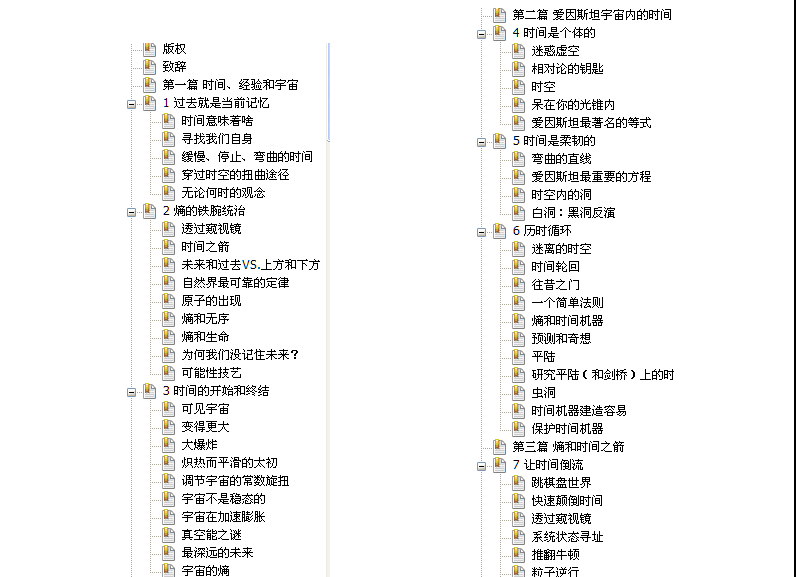博文
好书推介:《从永恒到此刻:探求时间的终极理论》
|||
From Eternity to Here: The Quest for the Ultimate Theory of Time
Sean Carroll
从永恒到此刻:探求时间的终极理论
作者:肖恩▪凯若尔
电子版下载地址见后
作者简介
全名肖恩•迈克尔•凯若尔(Sean Michael Carroll),生于1966年10月5日,是一位宇宙学家和物理学教授,研究领域包括暗能量、广义相对论、量子力学、引力作用、统计力学和宇宙学。他的兴趣宽广,涉及哲学、复杂性理论和信息论。他是美国加利福尼亚理工学院物理系的一位研究教授,是物理学博克“宇宙方差”的供稿者,在科学期刊杂志(如《自然》、《纽约时代》、《天空和望远镜》、《新科学家》)上发表过文章。
凯若尔是一位活跃的科学传播者,自2004年以来就经常在博克中发表文章。他出现在美国历史频道的《宇宙》、科学频道的《与摩甘•弗瑞曼一起穿过虫洞》和喜剧中心的《科尔伯特报告》等节目上。他已为教育公司发行了一套讲义,是关于暗物质和暗能量的;另一套讲义是关于时间的本性。他曾作为影片(如《雷神和创神:遗产》(Thor and TRON: Legacy))以及电视秀(如《波纹和骨架》(Fringe and Bones))的科学顾问。
凯若尔是广义相对论研究生课本《时空和几何》的作者,此书被美国许多大学采用;他还是一位频繁的公众演讲者,参与录制了《宇宙大课堂》、《时间物理学》、《希格斯玻色子》等讲课视频。
他还是三本畅销科普的作者:一本是关于时间之箭,名叫《从永恒到此刻》;一本关于希格斯玻色子,名叫《宇宙终极粒子》(本书);另一本关于科学和哲学,名叫《大图景:关于生命起源、意义和宇宙本身》。
《豪放的宇宙》作者科尔希勒曾评价道:“年青的博士后肖恩•卡若尔(Sean Carroll),他是哈佛最聪明、最风趣的天文学研究生之一。”这正是他后来在物理科普界和科学媒体中受欢迎的原因之一。
本书简介
理论物理学界正在升起一颗明星,展现了我们宇宙及其它事物的可怕景象,全部都开始于一个简单问题:为何时间在前进?
时间前进而不倒退——每个人都知道你不能复原一个鸡蛋。在当今最热情的年青物理学家们之一的手中,简单的早餐事实却变成一个理解大爆炸、宇宙和其它宇宙的一个切入口。在《从永恒到此刻》中,肖恩•凯若尔认为时间之箭总是从过去指向未来,它的存在性归因于大爆炸本身之前(爱因斯坦从未梦想过的现代宇宙学时期)的条件。虽然物理学家们越来越多地进入相对论领域,看似孩子的游戏。凯若尔的场景不仅是优雅的,而且它用同样容易理解的语言表达出来,构成他的团队博客“宇宙方差”,这是网上最大众化的物理学博客。
《从永恒到此刻》用理论物理学前缘的思想,来探索大爆炸之前的时空特性如何能解释我们日常生活中经历的时间流逝。凯若尔认为我们居住在一个婴胚宇宙内,属于一个宇宙大家族的一部分,其中我们许多兄弟姐妹经历着沿反方向行进的时间之箭。这是一张雄心勃勃而吸引人的超大尺度宇宙图景,就像《优雅的宇宙》和《时间简史》那样,将会迷住大片物理学科普粉丝们。
短评
凯若尔用通俗的文字向外行读者解释了关于时间的科学研究,但向外行听众是难以澄清混淆的。文句富有重要内容,有时深邃的信息总结几次,使得听起来情思激荡。而那些人一般是偶尔不理睬书中某个句子,或者说几乎不会去寻找并理解它。
——《出版人周刊》
凯若尔采用了一种随和的口语解释风格来探究挑战性的宇宙学问题。
——《图书馆期刊》
忘掉斯蒂芬•霍金的《时间简史》吧:这本由衷佩服的书真有分量…让人陶醉。
——《时代高等教育》、《本周书籍》
凯若尔的洞察力将勾起任何人的好奇心…最为享受。
——BBC焦点
长评
TheArrow of Time
By N. BARTLETTon 24 Feb. 2012
This is a book that explores the nature oftime and in so doing takes the reader in some unexpected directions. It is alsoquite a hard book.
Although Sean Carroll throws in quips andtouches of levity here and there, he is no Bill Bryson writing `A Short Historyof Almost Everything'. `From Eternity to Here' is a book you have to work at -but I found the effort worthwhile.
The author links the idea of time closelyto that of entropy, the quality of orderliness in matter and in particular theSecond Law of Thermodynamics: "The entropy of a closed system neverdecreases". Crude examples to illustrate the basic concept are theomelette (high entropy) that cannot be put back in the egg (low entropy), orthe cream and coffee (low entropy) which when stirred together (high entropy)cannot be separated.
Extending this concept to the universe, itis believed to have started as a tiny something (low entropy) and has evolvedto today's observable universe of stars and galaxies (higher entropy). Thisone-way process is seen as a analogue to time: it goes one way. We know aboutthe past but we do not know about the future: it goes one way.
However this description of entropy I foundcounter-intuitive. Surely in the past the universe was high entropy with aprimeval soup of basic particles and energy? While today is it not low entropywith stars, solar systems, galaxies and a sense of colossal order? It was notuntil page 166 that this paradox was explained.
"The culprit in this case is gravity.We're going to have a lot to say about how gravity wreaks havoc with oureveryday notions of entropy..."
Aha! Now we begin to make progress. DrCaroll's constant refrain is the question as to why the universe is relativelylow entropy. He thinks a `natural' state would be space with an even spread ofparticles and energy with high entropy. Instead we have an organised universeas we have seen which is low entropy.
Dr Carroll takes the reader down some verystrange meanderings to seek answers. To be fair he is attempting to explaincomplex issues by resorting to simple analogies and examples. Yet I found manyof them so trite that I would have accepted the original complex argument onits face value without the having the sweat of relating analogy to argument.
Having given the Second Law a good run out,Carroll then turns to quantum field theory, quantum mechanics and much later onto quantum gravity. In the meantime we meet Stephen Hawking, the world'sgreatest expert on black holes. His discovery that black holes emit radiationtransformed the understanding of how the universe could evolve. As black holes,of which there are believed to millions, including very large examples in thecentre of each galaxy, suck in matter they become larger and suck in more. Onetheory is that eventually (trillions of years) all matter will have beenabsorbed into black holes. But as black holes are emitting radiation, thenafter even greater lengths of time, they will steadily dissipate into energy.
The end of the universe will simply be avast energy field empty of all matter.
But there could be an epilogue. Because ofhow energy and matter behaves at the quantum level, random fluctuation mightcreate every million or ten million years a node or bubble of false vacuum. Itcould split off from the main field and then:
"Now we have a baby universe...all setto undergo inflation and expand to a huge size. If the properties are justright...the energy will eventually be converted into ordinary matter andradiation, and we'll have a universe that evolves according to theinflation-plus-Big Bang story".
So finally we get to the concept of themultiverse, something so beyond possible demonstration or discovery that itwill forever be a mystery. Yet it would resolve the issue of a low entropyorigin - it was spawned from a high entropy field. And that's how time started.
Read the book and be absorbed.
Thebest current commentator on cosmology
By futz on 27 Dec. 2012
This is a fine treatment of a current topicin cosmology, by a premiere theoretician in the field - a point lost on atleast one reviewer - he is not a Deepak Chopra, pulling arrows out of his rear.But my main reason for commenting is to point folks to an amazing work ofCarroll's. If you want an excellent tour of cosmology, get a hold of hisTeaching Company lecture series Dark Matter, Dark Energy - you will not regretit.
Thephysical reality of time
By Rama Rao on 28 Jan. 2010
The behavior of matter (or energy) in spaceand time is described by the laws of physics, but the puzzling thing aboutphysical reality is that space and time behave differently. Space is the samein all directions and it never changes, but time has preferred direction; pastto future and the cause-effect relationship runs parallel to this. There is nosuch thing as special place (space) in the universe but there is a specialtime. This is a mystery because physical laws governing the fundamentalparticles are mostly time-symmetric (it can function thermodynamically oranti-thermodynamically), but the time-asymmetry observed in many macromolecularprocesses is thermodynamic and it has an arrow of time. Examples include, aglass bottle breaking into pieces or hot water becoming cold are attributed tothe second law of thermodynamics which seem to set this arrow of time. Thus thephysical reality is not only governed by laws of quantum physics andrelativity, but also by the second law of thermodynamics which requires thatthe entropy (a measure of disorderliness) of a closed system, such as thisuniverse, increase with time. This implies that the past has more order thanfuture, hence the state of orderliness was probably the highest (or the entropywas the lowest) at the origin of the universe (big bang). The problem ofjustifying this arrow is not so much showing that the entropy of isolatedsystems increased, but explaining why there was low entropy in the past. Whileinflationary theory proposed by Alan Guth explains many key features of theearly universe but it doesn't explain low entropy.
In this book, the author looks for clues inseveral areas such as, properties of black hole; information-loss paradox andHawking radiation, string theory, inflationary epoch, multiverse cosmology andbaby universes. He argues that a classical de Sitter background (motherspace-time where vacuum energy is positive) does not fluctuate, but the spacewould be expanding and quantum fields will be fluctuating in a classicalfashion. But if quantum gravity is taken into consideration then de Sitterspace is itself susceptible to quantum fluctuations and this result in not onlystretching and bending of spacetime as required by general relativity but alsothey could splice into multiple pieces. These pieces first appear as bubbles ofspacetime, and then they grow and splice off to form baby universes. The babyuniverse created in a background de Sitter space is inclined both towards itspast and to the future, but each baby universe starts in a dense low entropystate and exhibits a local arrow of time as it expands and cools. The babyuniverses born in the past have an arrow of time pointing in the oppositedirection to those in the future, but for each universe, the time is directedtowards increasing entropy and the multiverse manifests overall time symmetry.The author's hypothesis sharply contrasts the idea that big bang represents theboundary to space and time, and it dispels the notion that space and time werecreated at this time. He distances himself from other physicists like LarrySchulman who suggests that the universe switched to a highly ordered state atabout 380,000 years when the universe became transparent to light (1, 2). Theessential features of thermodynamics in the arrow of time are discussed byothers which include mathematical physicist Roger Penrose (3), physicistsRobert Wald (4), and Larry Schulman (5).
This is an excellent review of the conceptof time in terms of physics, cosmology and philosophy. You need to have basicknowledge of physics to understand and appreciate the core ideas of the author.Chapters 12-15 are most interesting and the author discusses certain aspects ofcosmology and black holes that are not relevant to physics of time but hisdiscussions are well presented and it is very interesting to read. The mainhypothesis of the author, about the arrow of time presented in chapter 15 islargely speculative and it is unlikely that physicists are convinced with hisargument, however the debate will continue.
Brilliantlywritten!
By Jonathan Lord on 14 Jun. 2014
Reading this book is not a waste of yourtime! ;)
A great read, and hard to put down. Some ofthe concepts are a little mind-bending, and take a lot of thought to get yourhead round (what else would you expect from a book that tackles such asubject?) but it's fascinating to follow the journey the author takes you on.
If you are interested in this book, youshould already be beyond the stage of needing to see reviews about it - its amust read!!
目录



下载地址(资料源于网络,仅供学习教育研究使用):http://vdisk.weibo.com/s/sIxw0t-oqO8t
博主推介
本书作者是美国著名物理学家、科普作家和科普活动家,他之前所写的三本科普书都已成为畅销书。本书Kindl版的亚马逊评论达146个,畅销中。前几年搜集到此书电子版,感觉不错。本书内容丰富新颖、体系完备、插图丰富形象、语言通俗、富有物理思想深度和阅读趣味,只含有几个简单公式,初中生足以看懂本书的数学。本书是目前关于时间物理哲学最全面深入的思考和总结,论思想的丰富性和知识的新颖性,可完爆《时间简史》。严重推荐!
本文是博主编译而成,禁止复制转载!
附录:时间是什么?物理学家探究其终极理论(What Is Time? One Physicist Hunts for the UltimateTheory)
作者:艾琳•彼芭(ErinBiba) 译者:kiwi
注:凯若尔,这里译为卡罗尔。
连线:你能从一个外行人的角度解释一下你的时间理论吗?
卡罗尔:我正在试着去理解时间是如何工作的。同时这也是一个有很多不同面向的庞大问题,其中有许多方面可追溯到爱因斯坦及其时空理论,以及我们如何使用钟表来测量时间。但是关于时间我感兴趣的一个方面是时间之箭:即过去与未来不同这一事实。我们能记住过去但是我们无法记住未来。这是一个不可逆的过程。就像有些事情的发生,比如你能把一个鸡蛋做成煎蛋,但是你不可能将煎蛋做成最初的鸡蛋。
同时可以说是我们只是理解了一小部分。时间之箭是基于奥地利物理学家路德维格·波尔兹曼(Ludwig Boltzmann)在1870年代提出的理论。他将他的理论称为熵(entropy)理论。熵是对无序程度的一个度量,而且熵往往是增加的。这是根据热力学第二定律(second law of thermodynamics)得到的:即熵随着时间增长,世间万物会变得更加无序。所以,如果你桌上的文件整整齐齐地放着,你离开之后返回,发现桌子上乱成一团你也会不觉得奇怪。如果回来时发现之前本就乱成一团的桌子变得整整齐齐,你将会觉得非常奇怪。这就是熵和时间之箭。熵因为无序程度的增加而增加。
所以,波尔兹曼了解这一点并且他解释了熵是如何与时间之箭相关的。不过他的解释还缺少了一块,即为什么熵最初总是处在一个开始向上增长的低水平起点?为什么宇宙中的文件最初总是整整齐齐的?基本上,我们可观测的宇宙是从大约137亿年前的一种精致秩序(异常低的熵)状态中开始的。比方说,宇宙就像一个发条玩具,在137亿年前扭动发条上足了劲,那么最终将逐渐平息下来。但是为什么它一开始总是上足发条的呢?为什么它处于这么奇怪的、低熵的、不寻常的状态?
这就是我现在正试图解决的问题。我试着去理解宇宙学(cosmology),为什么大爆炸(the Big Bang)理论能够解释宇宙的性质?同时这样思考也是很有趣的:即直接回到我们的厨房,我们如何能够做煎蛋?我们如何能够记住时间的方向?为什么会产生“先前效应”(precedeeffects)?为什么我们出生时年轻并慢慢变老?所有这一切都是因为熵的增加,都是因为有大爆炸。
连线:所以大爆炸开启了这一切。但是你推导出在大爆炸之前还存在某种东西。某种东西制造了大爆炸。它们又是什么呢?
卡罗尔:如果你在冰箱里发现一个鸡蛋,你不会觉得奇怪。你不会说,“哇,一个低熵形态。它真罕见。”因为你知道宇宙中并不是只有这一个鸡蛋。它是母鸡生下的,它是饲养场的一部分,它是生物圈的一部分,等等。但是对于宇宙,我们无法做这些联想思考。我们无法说出宇宙是其他什么东西的一部分。但是这正是我要表达的。我与现代宇宙学的一系列观点相一致,现代宇宙学说我们观察到的宇宙并非现存的这些,它只是更大的多元宇宙(multiverse)的一部分。大爆炸并不是宇宙的开端。
如果这种观点正确的话,那将改变你想提的问题。如果不正确,你的问题将变成“为什么宇宙以低熵状态为开端?”如果它正确,那你的问题将变成“为什么多元宇宙的一部分宇宙要经历一个低熵的阶段?”而且如果真正确的话,你的问题将更容易回答。

多元宇宙示意图(图中“空的安静父级宇宙”,翻译得不好,当为“虚静的父宇宙”)
连线:在这个多元宇宙理论里,你假设在中间有一个静止的宇宙。从那里开始,一些小宇宙从中脱离,并且向不同的方向(或说时间之箭)延伸。所以这是否意味着处于中间的多元宇宙中不存在时间?
卡罗尔:所以这是一个值得刻画的区别。在宇宙的历史中有许多不同的时刻,时间能告诉你哪一个时刻是你正在谈论的。然后就有了时间之箭,它给了我们过程的感觉,向时间流动或移动的感觉。所以这个处于中间的静止的多元宇宙具有作为坐标的时间,但是没有时间之箭。没有相对于过去的未来,每一个时刻都是彼此平等的。
连线:所以那是一个我们无法理解无法感知的时间?
卡罗尔:我们能够测量它,但是你无法感觉到它。你将不可能体验到它。因为像我们一样的客体将无法在那个环境中存在。因为我们依赖时间之箭正是为了我们的存在。
连线:那么,在那个宇宙中的时间又是什么呢?
卡罗尔:即便是在真空的宇宙里,时间和空间仍然存在。物理学家回答这样的问题是完全不成问题的:即“如果一棵树倒在树林里并且那里没有人听见声音,那么树倒下发出声音了吗?”他们回答说,“有!当然发出声音了!”同样地,如果时间在没有熵的情况下流逝并且没有人在那个宇宙里体验到它,那里仍然还存在时间吗?是的,仍然存在时间。这依然是自然基本定律的一部分,甚至是关于宇宙的基本定律的一部分。这正是没有因果性,没有记忆,没有进程,没有年龄老化或新陈代谢或像这样的任何事物的空宇宙里发生的事情。那是一个任意的波动。
连线:如果这个处于中间的宇宙只是在那里,而什么也没有发生;那么具有时间之箭的这些小宇宙究竟如何从中间的多元宇宙中脱离呢?因为这似乎是一个可衡量的事件。
卡罗尔:完全正确。这是一个很好的观点。而答案就是,那里几乎什么也没发生。所以我试图建立的观点的重点就是“为什么我们看见我们身边的宇宙时刻在变化?”这个问题的答案就是宇宙不可能真正永远保持静止。宇宙不可能存在这样一个状态,即永远停留在那里的状态。如果存在,我们就应当居住在那个状态里并且永远呆在那里。
具有时间之箭的小宇宙从中间的多元宇宙上脱离就像一个球从山上滚下来,但是山下没有尽头。这个球始终在过去与未来之间滚动。于是,处于中间部分的多元宇宙在原地保持静止——那个中间的小区域似乎什么也没发生。但是,根据量子力学(quantummechanics),事件能够偶然地发生。中间的宇宙也可能从任意的波动转变成存在。这种改变发生的可能性还是存在的。
所以,我认为宇宙类似于原子核(atomic nucleus)。它不是完全稳定的,而是有一个半衰期(half-life),它将按半衰期进行衰变。如果你看着它,它看起来绝对稳定,没有任何事情发生;看着看着,然后嘣地一声发生衰变。突然有一个阿尔法粒子(alpha particle)从原子核里出来,而从中间的多元宇宙里出来的是具有时间之箭的小宇宙。
连线:那些新产生的、沿着时间之箭前进的不同小宇宙里,存在物理定律不同的地方,比如时空异常。那么时间之箭在那些地方还仍然存在吗?
卡罗尔:这可能。关于时间之箭奇怪的事情是在物理学的基本定律中并没有发现它,它不在那里。于是时间之箭只是我们能看见的宇宙的属性,而不是某个不同粒子的定律的属性。所以说,时间之箭建立在任何适用当地物理定律的地方。
连线:如果时间之箭是基于我们的意识和感知它的能力,那么像你这样更充分地理解它的人与我们其他人相比是否有不同的时间体验?
卡罗尔:事实上不是。它工作的方式是知觉先产生,然后才是对它的理解。所以理解并不会改变先前的知觉,理解只是帮助你将知觉放进更广泛的背景中。我的书里有一句圣奥古斯汀(St. Augustine)的名言,他说的大意是这样的,“直到你问我时间的定义,我才知道时间是什么,不过我无法给你答案。”所以我认为我们所有人知觉时间推移的方式非常类似。然后试图去理解它并不会改变我们的知觉。
连线:那么在像黑洞(blackhole)或者高速运动以致我们对它们的知觉已经改变的地方,那里的时间之箭发生了什么呢?
卡罗尔:这就回到了爱因斯坦的相对论。对任何一个在时空中移动的人而言,他们自身以及他们带在身上的时钟——包括他们的生物钟(biological clock),比如心脏和心理认知——没有任何一个会感觉时间走得快一点或者慢一点。或者,无论如何,如果你身上带着精确的时钟,你的时钟将始终每秒钟走动一下(不快不慢)。无论你是在黑洞里,现在在地球上,还是在那个处于中间的什么也没发生的多元宇宙,都没关系,都会是这样。但是爱因斯坦告诉我们的是你通过空间和时间的途径能够戏剧性地影响你感觉在流逝的时间。
时间之箭是关于方向的,而不是关于速度的。一个重要的事实是有一个一致的方向(速度则不一致)。在时空中的任何地方,都是过去和未来这一方向。
连线:所以你将告诉迈克尔·福克斯(MichaelJ. Fox,加拿大男演员,主演《回到未来》电影三部曲),回到过去去拯救他的家人是不可能的?
卡罗尔:走出时光旅行的迷雾最简单的方式是宣布那不可能做到。这很可能是正确答案。然而,我们仍然不能确信。我们无法绝对地证明这不可能发生。
连线:至少,你不可能回到过去。
卡罗尔:嗯,回不去。你可以很容易进入未来,这是没有问题的。
连线:我们现在就正在朝未来走去!
卡罗尔:昨天,我向未来(现在这个时刻)走去。
我在我的书中指出的一点是如果我们想象回到过去是可能的,假设,回到了过去,将会引起的所有矛盾都最终追溯到一个事实,即如果你能够回到过去你将无法定义一个方向一致的时间之箭。因为那时你认为是未来(你已经经历过)的时刻在宇宙的“过去”里。所以不可能有一个时刻在任何地方都相同。同时这也与物理定律不相符,而且更与我们的日常经验不相符;日常生活中我们能够作出抉择来影响未来,但是我们无法作出抉择来影响过去。
连线:所以,多元宇宙理论的一部分是我们自己身处的宇宙最终将变成空的、静止的宇宙。那么是否意味着我们自己身处的宇宙最终将会脱离出另一个宇宙?
卡罗尔:时间之箭不会永远前进。在宇宙的历史中存在一个阶段,那时你从低熵走入高熵。但然后一旦你到达这个宇宙的最大熵,你将不可能再前进,再没有时间之箭了。这就像房间。如果你抽走房间里的所有空气,并把这些空气放在一个角落里,那么这个角落就处于低熵状态。然后你释放角落里的空气,最终空气将充满整个房间;最后将停止下来,房间里的空气再不会有什么变化。当还在变化的时候,存在时间之箭。但一旦你达到均衡点时,那么时间之箭将停止存在。最后,理论上,新的宇宙脱离。
连线:所以在我们的后面有无数的宇宙,在前面也有无数的宇宙。这是否意味着我们能够前进到在我们前面的那些宇宙里去拜访他们?
卡罗尔:我认为不可能,但是我也不知道。事实上,我在加州理工大学(不对,当为学院)(Caltech)有一个博士后,他对宇宙间的互相碰撞很感兴趣。现在我们把它们都称为宇宙。但事实上,说实话,它们是拥有不同当地情况的空间的区域,而并非形而上学地彼此不同。它们很遥远。你可能可以想象不同的宇宙相互碰撞并留下痕迹和可观察的效应。也可能这一切不会发生。或者如果它们在某个地方,我们也不可能得到任何它们在那里的信号。如果这是真的话,要是这些描述变得有意义,唯一的方式是你假设多元宇宙不是一种理论,而是某种理论的预测结果。
如果你认为你真正理解重力法则和量子力学,真正很好地理解,那么你可以说,“根据这些定律,宇宙是经脱离而存在的。即使我无法观察到它们,这也是我的理论的一个预测结果,同时我已经使用其他方法测试了这些理论。”我们现在还无法到达那里。我们还不知道如何建立一个好的理论,以及如何测试理论。但是我们展望的课题将提出一个关于量子引力的良好理论,在我们的宇宙中进行测试,然后严谨地预测我们无法观测到的事物。
https://blog.sciencenet.cn/blog-289142-1054685.html
上一篇:好书推介:《宇宙终极粒子》
下一篇:好书推介:宇宙新物理学中的时尚、信仰和幻想